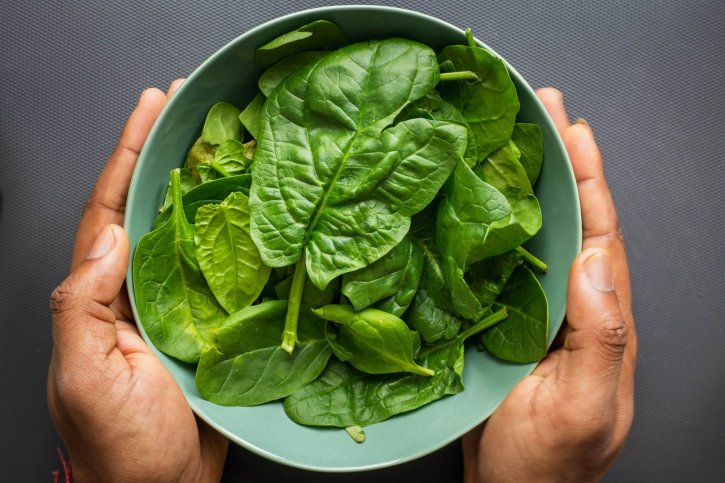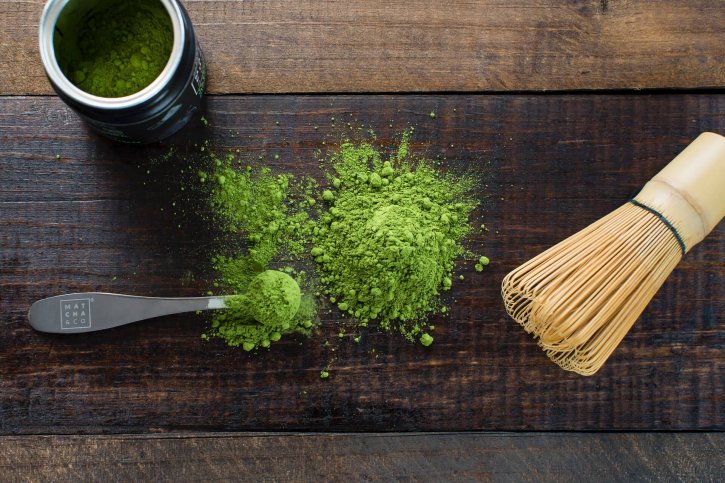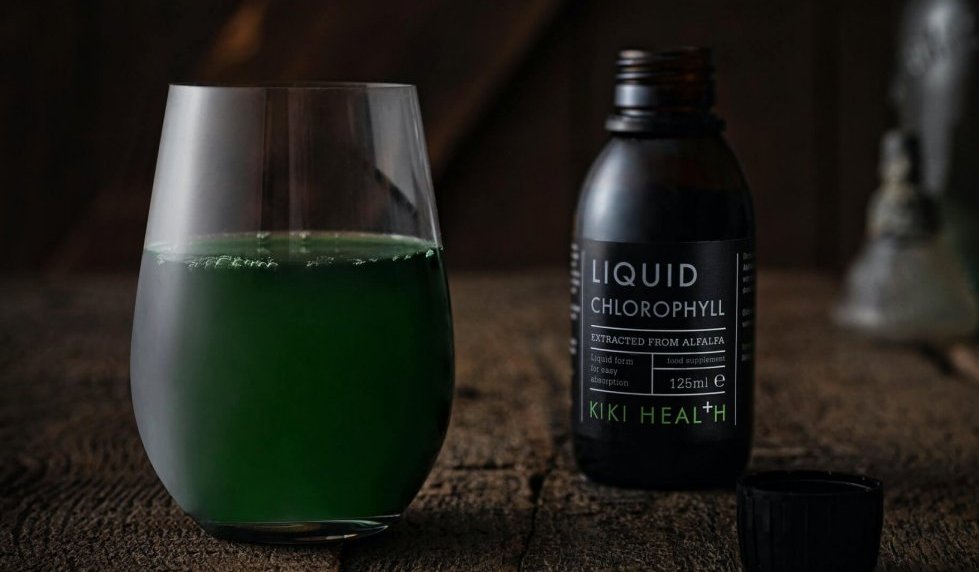What Is Chlorophyll?
The first time you heard of chlorophyll was probably in your grade school science class. You probably remember that chlorophyll is what makes plants green and helps convert sunlight to energy. Besides working as solar conversion for plants, chlorophyll can do amazing things for the human body that you never learned in school.
Technically, chlorophyll is the green pigment found in plants, algae, and cyanobacteria. It’s responsible for photosynthesis, the transformation of light energy into chemical energy. The chemical energy then converts water, carbon-dioxide, and minerals into oxygen and energy-packed organic material.
Not Just for Plants
Chlorophyll is the stuff of life. The world as we know it depends on the chlorophyll in plants to survive. Green leafy vegetables are nature’s best antioxidants, and they are loaded with natural chlorophyll. It’s no wonder that chlorophyll contains benefits for humans, too.

Chlorophyll is edible, though much of its beneficial components are lost during the digestive process. Chlorophyll is available in two forms. One is as a supplement, though as its natural organic composition. The other is a semi-synthetic copy.
To withstand the human body’s digestive system, chlorophyll is manufactured and sold in the form of a supplement called chlorophyllin. Chlorophyllin’s properties are extremely close to that of chlorophyll.
Chlorophyll can be found in large amounts in green leafy vegetables. Although consuming fresh green food is good for you, they don’t provide an adequate amount of chlorophyll to be beneficial to the human body.
Because the digestive system neutralizes most of the chlorophyll consumed through regular foods, it’s almost impossible to eat enough greens to benefit from chlorophyll. The digestive process is why chlorophyll supplements, which provide a large volume of chlorophyll, are an ideal choice.
Chlorophyll a versus Chlorophyll b
There are two types of chlorophyll and they are both necessary for photosynthesis. However, one type plays a larger role than the other. Let’s review some aspects of both chlorophyll a and chlorophyll b.
Chlorophyll a
Photosynthesis can’t happen without chlorophyll a. By passing energized electrons along, chlorophyll a makes sugars out of sunlight —essentially creating organic energy. When it comes to the absorption of light to make energy, chlorophyll a takes in the violet-blue and orange-red portion of the spectrum.
Chlorophyll b
Chlorophyll b is present in green algae and plants. Chlorophyll b allows the absorption of the higher frequency blue light spectrum, allowing more use of less sunlight. Many plants that grow in the shade have chlorophyll b to adapt to a lack of sunlight.

Benefits of Chlorophyll
The health benefits offered by chlorophyll range from boosting the immune system to ridding the body of bad odors. The following are a few examples of the positive effects that chlorophyll can have on the body.
Generating and Cleaning Blood
Although plants don’t have blood, humans can benefit from the blood improving capabilities of chlorophyll. The quantity and quality of blood can see benefits with consistent chlorophyll supplements. Chlorophyll attracts heavy metal, toxins, and damaged cells and carries them away from the body. Its stimulating effect on blood generates more blood and also allows these cells to carry more oxygen.
Reduce Body Odor and Bad Breath
It’s not a secret that what people consume can affect their body odor. For instance, asparagus can change the scent of urine and garlic can change the smell of a person’s breath. When consumed, chlorophyll can neutralize odors. Chlorophyll is thought to lower enzymes which prevents bad odors from forming. Because chlorophyll curbs odors, it’s used in deodorants and some mouthwashes.
Removing Toxins
In addition to moving toxins out of blood, chlorophyll also sweeps toxins out of the liver and digestive tract. By cleaning out wastes like cancer-causing toxins and pollutants, the digestive tract can more readily absorb nutrients. In an animal study, chlorophyll was found to reduce the amount of liver tumors by 29-83%. Chlorophyll also keeps the digestive tract regular, preventing constipation. As an antioxidant, chlorophyll works overtime, removing free radicals and keeping the body youthful.
Helping with Weight loss
When it comes to weight loss, chlorophyll may be able to reinforce weight loss. In one study, chlorophyll was found to increase weight loss in participants who were administered chlorophyll. The belief is that chlorophyll makes the body more alkaline.

A 2013 study in the journal Appetite found that supplementing high-fat meals with chlorophyll compounds helped to suppress appetite and prevent weight gain in women. Later studies also found that chlorophyll containing foods suppressed the desire to consume richer, more tempting —but unhealthy—foods.
Wound Healing
Many survival stories will find the hero using leaves to tend to injuries. A poultice of crushed leaves rubbed into a laceration is a survivalist’s idea of first aid. These stories may be grounded in fact, because studies have shown chlorophyll to be effective at decreasing inflammation. Ointments containing chlorophyll may also reduce pain, promote healing in skin injuries, improve acne, and smooth skin.
Foods High in Chlorophyll
Although chlorophyll is found in greens, it’s difficult to consume enough from food to reach the maximum benefits chlorophyll can provide. That said, the following foods are known for having high levels of chlorophyll:

- Matcha Green Tea
- Alfalfa Sprouts
- Wheatgrass
- Spinach
- Mustard Greens
- Asparagus
- Green Beans and Peas
- Broccoli
Supplement Dosages

Make sure to check the manufacturer’s packaging for the correct dosage and instructions before taking chlorophyll supplements. Otherwise, the following are the standard dosage amounts.
For liquid chlorophyll supplements, the recommended dose is about 1 teaspoon (5 milliliters) to a cup of water or a drink. Some people find the taste difficult to get used to. If this is the case, start with small amounts and work up to a higher dosage as tolerated. Chlorophyll capsule dosages can range from 100 to 300 milligrams up to three times per day.
Side Effects and Risks
Although chlorophyll isn’t known for any toxicities and is thought to be fairly safe. However, chlorophyll does have a few possible side effects. The most common are skin reactions like a rash or dry skin. Other side effects include:
- Loose stools
- Abdominal pain
- Discolored stools or urine (green)
Individuals who experience these side effects should stop taking chlorophyll and consult with their physician. Pregnant women, women who are breastfeeding, and people who have digestive disorders should consult their physician before taking chlorophyll supplements.
Being Green
Being able to harness the sunshine into energy makes chlorophyll one of the miracles of nature. Its very existence has made life on earth possible. Chlorophyll supplements allow humans to take a bit of that miracle into our bodies every day.




